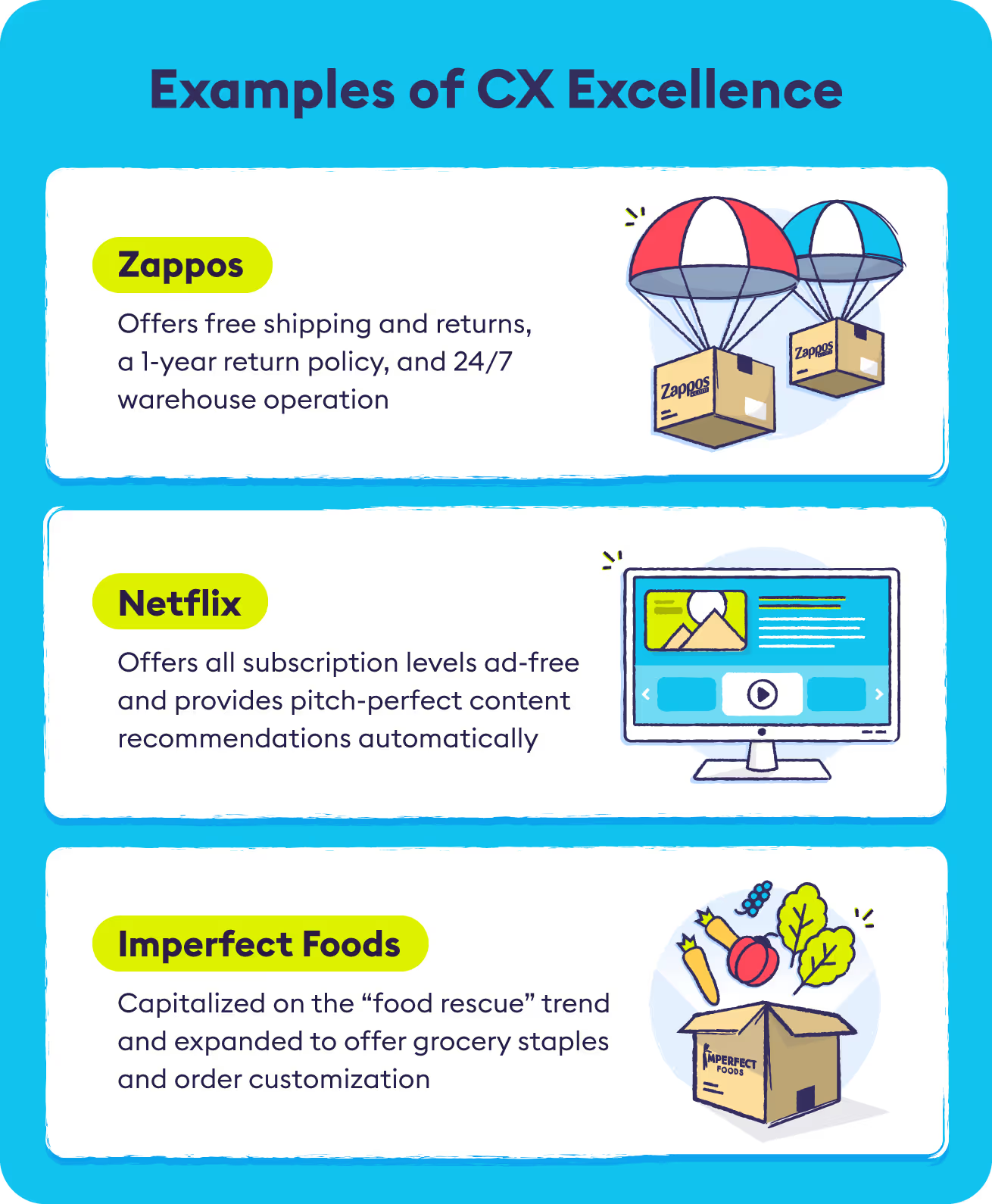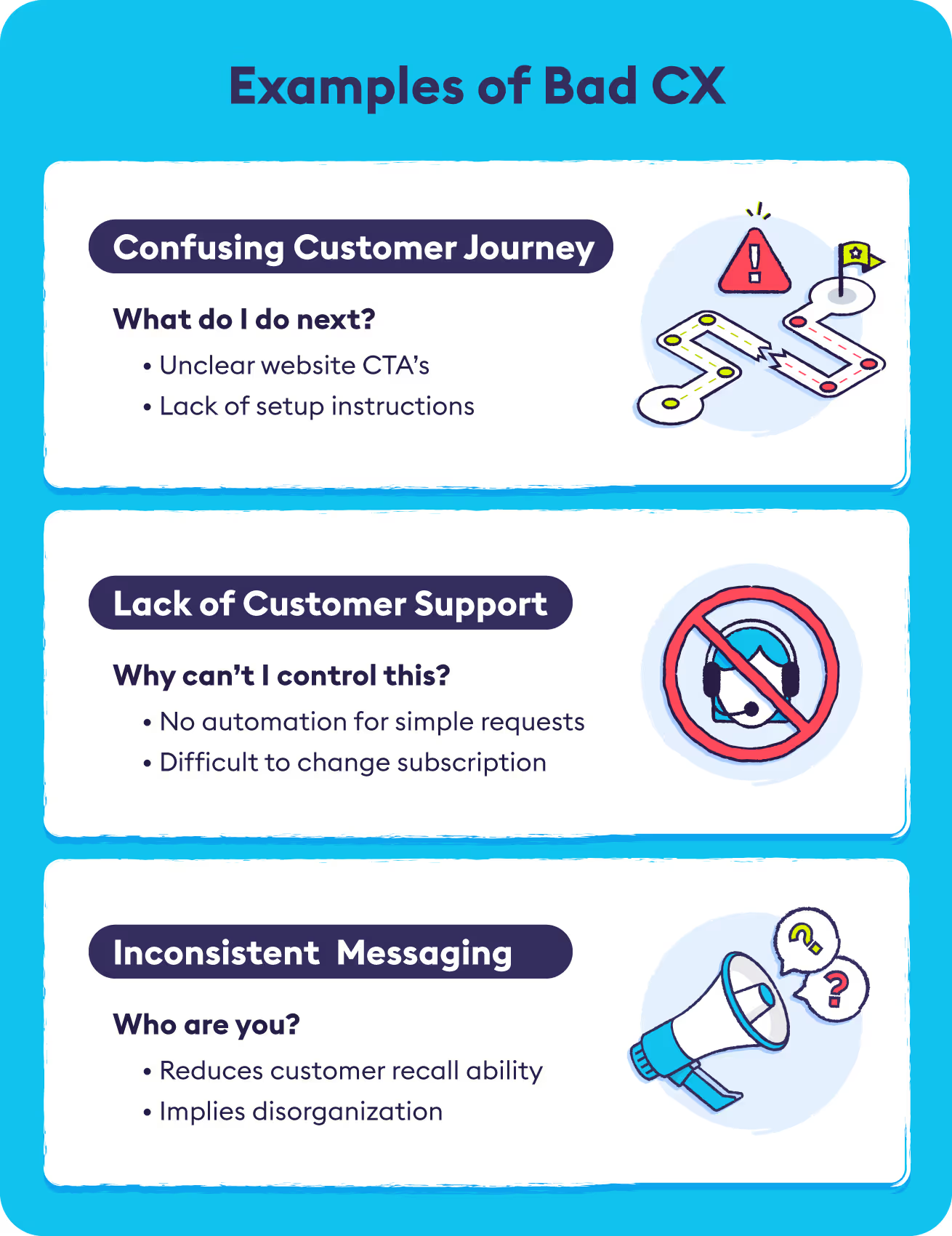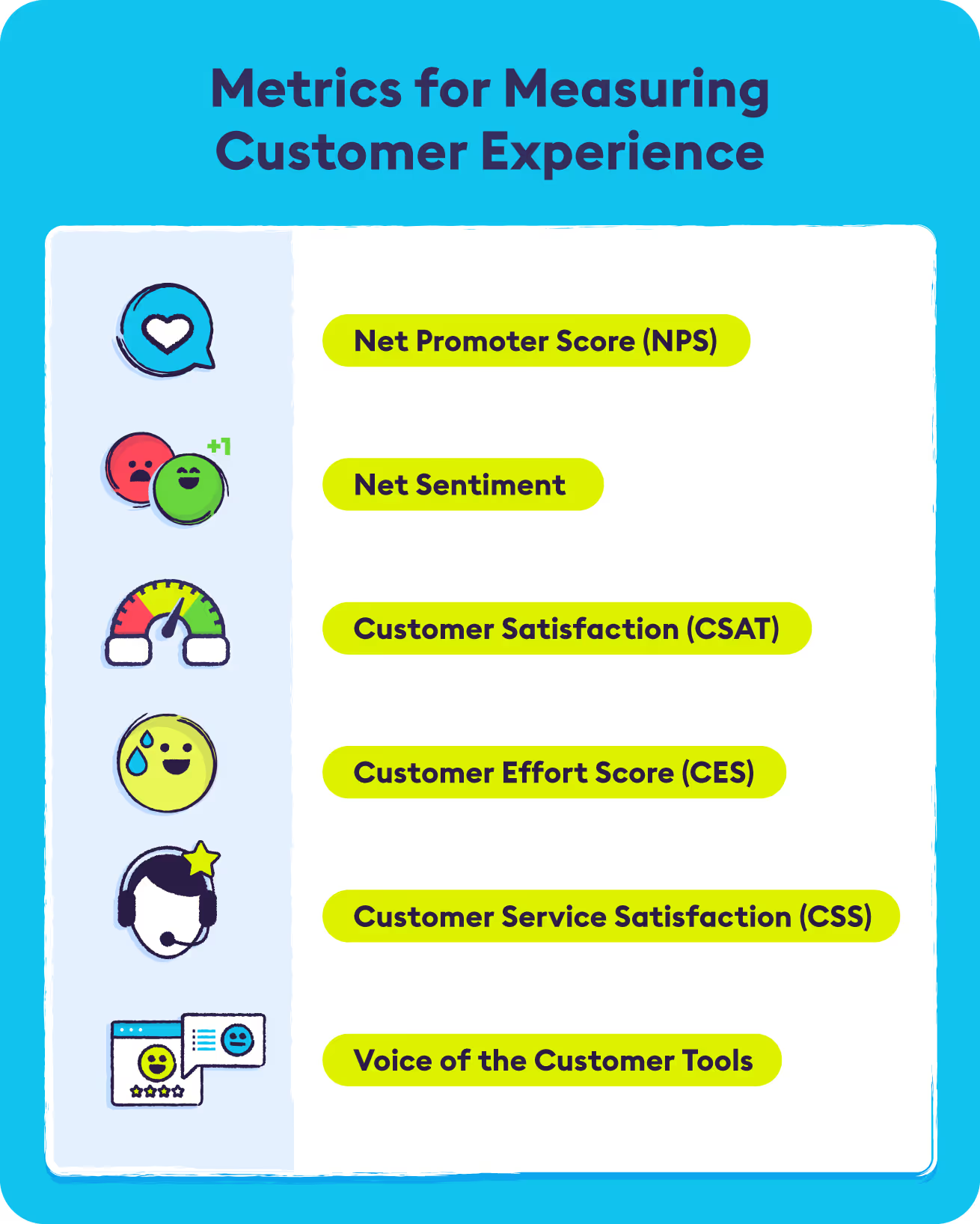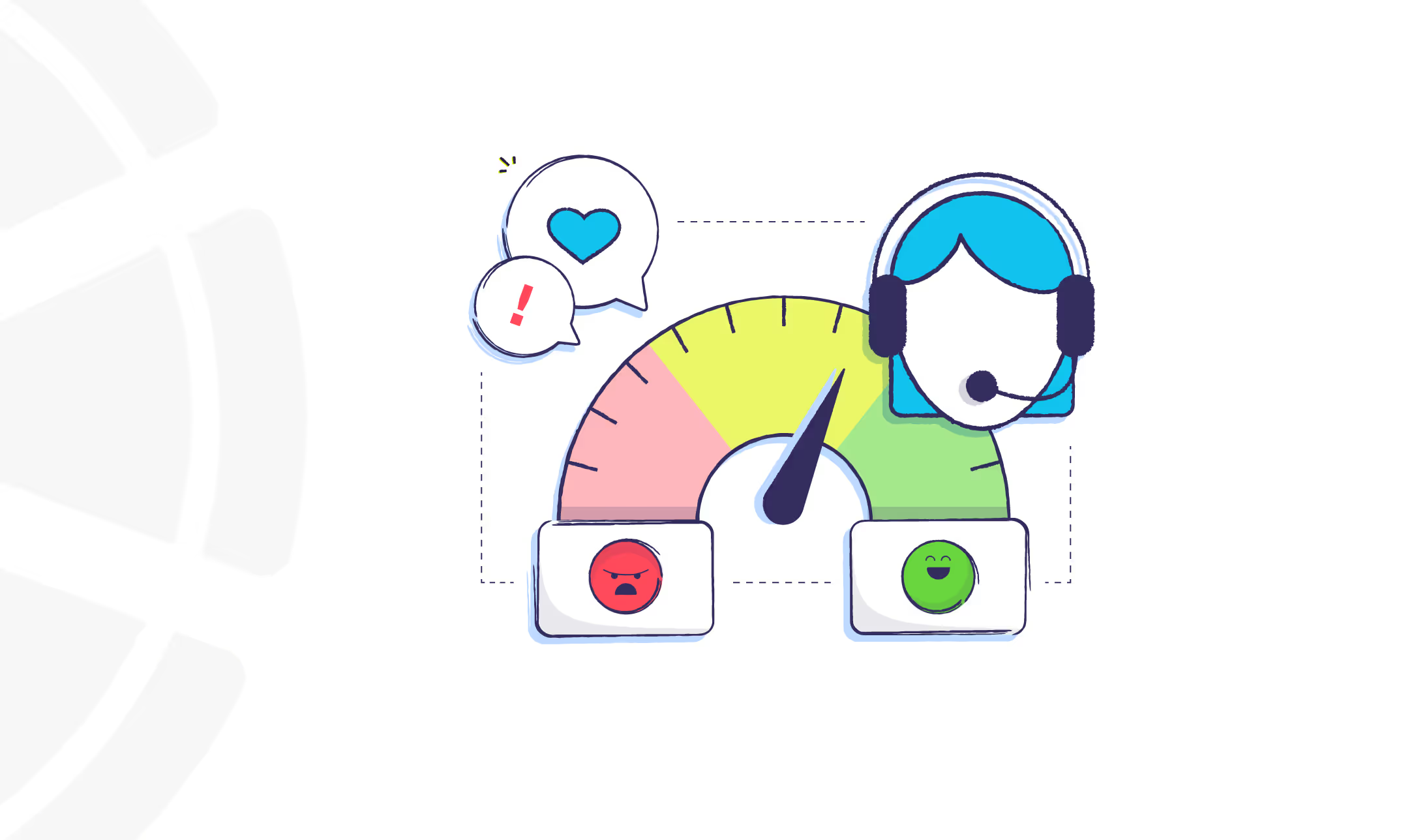It’s a term thrown around a lot these days, but what is CX exactly? CX is the way customers think and feel about a company throughout the duration of their relationship, and these perceptions are shaped each time a customer interacts with a brand. As our CEO here at Chattermill explains it, “CX is the mix of utility and emotional value a company brings to its customers.”
Below we’ll explain the vital importance of CX to a company’s success and go through examples of both good and bad CX to help you understand this concept further.
What Does CX Mean?
CX stands for “customer experience” and defines the relationship between a company and its customers over a duration of time. It’s important to understand that CX is not comprised of one simple number or calculation. Rather, it’s an amalgamation of a variety of factors and interaction points.

CX is best understood in the context of the customer journey, from initial awareness, to comparison with competitors, to conversion, and to ongoing communication after conversion. During this journey, potential and current customers will be constantly evaluating their experience with your brand in terms of utility and emotional value and how well you address their pain points.
Examples of utility value include things like price, product availability, and ease of use, where emotional value includes factors like brand perception, advertising fit, and level of customer care. The goal is to provide a good customer experience by meeting and exceeding expectations at each of these levels.
Why is CX Important?
CX is important because ultimately, it determines whether your business is successful or not. Successful companies run on happy customers, so providing a good customer experience should be a central strategy. Building a good CX will help you achieve things like:
- Improving customer touchpoints - By gathering feedback and listening to your customers about what isn’t working, you’ll be able to pinpoint touchpoints that need improvement and work to reduce friction and stress for both your customers and your team internally.
- Building brand advocacy - Customers will notice your efforts to improve and will appreciate the ease of use and transparency you provide, leading them to become brand advocates and recommend your company to others.
- Reducing customer churn - Perhaps most importantly, focusing on improving your CX will keep your customers happy, which means you’ll avoid losing them to the competition and will be able to rely on the loyalty of existing customers to continue to spend.
Examples of Good CX
Providing an exceptional customer experience will look different for every brand. The key is to identify areas of opportunity within your market in order to stand out from competitors, along with continuously gathering feedback to improve your current offerings. Check out our post covering 5 Strategic Ways to Improve Retail Customer Experience.

Below are a few examples of big-name brands that were able to succeed because of their ability to do just that.
1. Zappos
The online shoe retailer went from nearly going under in the early 2000s to becoming a billion-dollar company acquired by Amazon less than 10 years later. How did they do it? By optimizing their CX to address pain points like poor customer service and the inability to try on merchandise before purchasing online.
Zappos offers free shipping and returns, a 1-year return policy on unworn goods, and 24/7 warehouse operation for faster shipments, all things that engender customer loyalty and ease of use.
2. Netflix
Although Netflix was the first on the TV and movie streaming scene, they had to work hard to keep customers loyal among a strong crop of competitors. Today Netflix continues to offer the best CX of any streaming platform and keeps its customers engaged by offering all subscription levels ad-free, pitch-perfect content recommendations based on user preferences, and alerting users to new releases for shows and movies they are highly likely to enjoy.
3. Imperfect Foods
Founded in 2015, Imperfect Foods is one of the newer grocery delivery services on the market, but its popularity has skyrocketed in the past couple of years. It was one of the first major brands to capitalize on the “food rescue” or “food salvage” trend among eco-conscious Millennials.
Imperfect Foods provides an excellent CX by targeting potential customers with appealing ads on Instagram, allowing for easy box customization every week, and expanding its offerings from only produce to include weekly staples like olive oil, yogurt, bread, and a variety of snacks.
Examples of Bad CX
In addition to finding opportunities to stand out with good CX, there are a few things you should make sure to focus on in order to avoid bad CX.

1. Confusing Customer Journey
The route from awareness to conversion should be as seamless and clear as possible. If not, customers will become confused and frustrated and likely churn as the effort won’t be worth their time. Examples of this could include unclear CTA’s on a website so visitors don’t know how to contact you, or lack of setup instructions after signing up for a free trial.
The best way to combat this is with frequent communication, especially at the start of an engagement. Use email outreach and ad retargeting to contact potential leads and guide them through the customer journey.
2. Lack of Customer Support
Customers want to feel that they are in control of their purchases. Companies that make it difficult to change account preferences, update subscriptions, pause your services, and in general don’t offer flexibility are not providing the type of CX that 21st-century customers need. Customer service and support should be as automated and easy as possible - today’s consumers are no longer content to wait on hold for hours just to fix a simple issue.
3. Inconsistent Messaging
Remember, customers start forming opinions and evaluations of your brand before they ever consider purchasing. Your brand messaging across all channels should be consistent in tone, theme, color, font, and every other factor in order to aid customer recall and reduce confusion.
With so many options to choose from, customers today tend to make snap judgments, and an outdated logo on one of your product pages or a tone-deaf tweet can be enough to make someone pass on your company. After all, if you don’t care enough about your own branding to keep it top-notch, why would you care enough about your customers to provide them with the best experience possible?
How to Measure CX
Now that you have a better idea of what makes good and bad CX, we’ll get into how you can start measuring the success of your efforts. As mentioned earlier, there is no one defining metric for CX. Rather, you should be gathering data from many different sources to better understand the full picture of what your customers are saying and experiencing.

1. Net Promoter Score and Net Sentiment
One of the most well-known CX metrics is net promoter score or NPS. NPS data is collected via surveys that ask customers the question “On a scale of 0-10, how likely are you to recommend us to a friend?”. By calculating the percentage of Detractors (0-6), Passives (7-8), and Promoters (9-10), companies can get a benchmark of their performance to compare to similar competitors in the industry.
Similar to NPS is Chattermill’s proprietary metric, net sentiment. Net sentiment is calculated the exact same way as NPS, but incorporates open-ended customer feedback from a variety of sources instead of a single survey question. These responses are tagged via AI and compiled into an overarching net sentiment score.
2. CSAT, CES, and CSS
Though NPS is the most popular CX metric to track, there are many other specific survey types that you should keep in your arsenal as well. We outline these in detail in our piece on the best customer satisfaction metrics. These other types of surveys include:
- CSAT or customer satisfaction, which asks “How satisfied are you with your experience?” and asks respondents to rate on a 1-10 or 1-5 scale.
- CES or customer effort score, which asks a question like “How easy was it to resolve your issue?” or “How easy was it to interact with this company?” Respondents are asked to rate their experiences on a scale of very difficult to very easy.
- CSS or customer service satisfaction asks a similar question as a CSAT survey but is only sent out after a customer has an interaction with a customer service rep. These types of surveys are often automated as part of the customer service process.
3. Voice of the Customer and Open-Ended Feedback
In addition to these specific, number-based surveys, gathering open-ended feedback from your customers is the best way to improve your CX and CSAT, as you’re getting information straight from the source. This information can come from a lot of different places (think open-ended surveys, focus groups, online reviews, social media, etc.) so it’s important to have a tool that distills this data into useful information.
As we talked about before, Chattermill’s software does this via the net sentiment metric. There are also many voice of the customer (VoC) tools out there that integrate with Chattermill. You can check out our list of favorites to learn more.
So, what is CX? We hope you have a better understanding of this complex, multi-faceted approach to business and how it can help you achieve growth through customer loyalty. A better CX will also result in a higher customer lifetime value. Contact us via the form below to learn more about our tool and how it can integrate into your current CX program.















